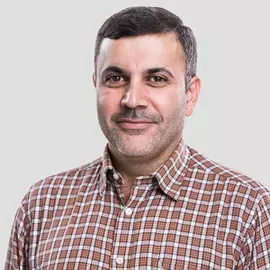Developing a Rotor Model of a Novel Lighter-Than-Air System of a Wind Power Turbine
Lighter-Than-Air Wind Power Turbine
Beschreibung
The technology of Airborne Wind Energy (AWE) aims to develop new systems that operate to harvest strong wind power at several hundred meters above ground level. At that altitude, wind currents are stronger and much more stable than those close to ground level. For the installation of the wind power system at that altitude, the use of a buoyant gas aerostat allows the user to carry an electrical generator which hovers in the sky with a cable-tether connection to the earth. Since 2012, several development steps have been achieved on a new model of a lighter-than-air wind power turbine (Patent Pending). A novel rotor has been introduced to provide power generation with high performance and reduced weight-to-swept-area ratio. Several tests on the proof-of-concept have been conducted to date with both on-ground and in-sky open-field trials. Currently, further research efforts supported by SFOE, the Swiss Federal Office of Energy, are aimed at the further development of this novel lighter-than-air wind power turbine. In the present project, a small-scale model combining numerical simulations, material tests, and wind tunnel experiments is applied to develop a new rotor and to demonstrate its efficiency. Investigations of the geometrical influences on the rotor performance are aimed at a new design and arrangement of the blades for improved power generation.
Financially supported by SFOE (BFE), three institutes from our school of engineering are contributing to this project. They are providing expertise in: mechanical designs and computational simulations at ICP (Institute of Computational Physics), aerodynamic testing in wind tunnels at ZAV (Center of Aviation, www.zav.zhaw.ch), and light-weight polymer materials development and testing at IMPE (Institute of Material Process and Engineering, www.impe.zhaw.ch).
Eckdaten
Projektleitung
Projektpartner
Zarawind Safa
Projektstatus
abgeschlossen, 01/2016 - 12/2017
Institut/Zentrum
Institute of Computational Physics (ICP); Zentrum für Aviatik (ZAV); Institute of Materials and Process Engineering (IMPE)
Drittmittelgeber
Bundesamt für Energie BFE
Projektvolumen
96'000 CHF
